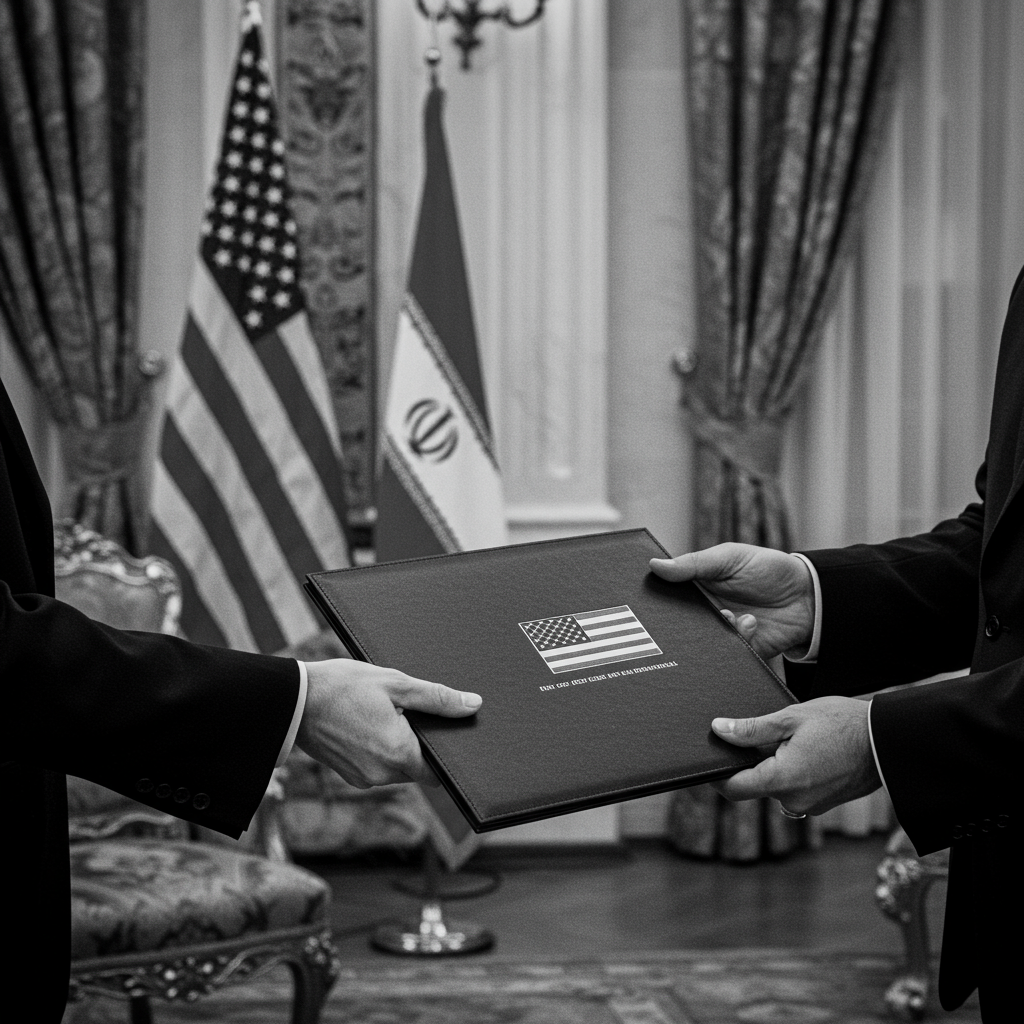In a significant diplomatic development, the United States has formally sent a new proposal for a nuclear deal to Iran. The White House confirmed the delivery on Saturday, signaling a renewed push to curb Tehran’s advancing nuclear program.
The proposal was reportedly delivered to Iranian officials via Oman, which has played a mediating role in recent indirect talks between Washington and Tehran. Iran’s Foreign Minister, Abbas Araghchi, confirmed receiving “elements of a US deal” from his Omani counterpart, Badr Albusaidi, acknowledging the overture.
This diplomatic move comes against the backdrop of concerning findings from the International Atomic Energy Agency (IAEA). A recent IAEA report indicated that Iran has dramatically increased its production of highly enriched uranium. According to the report, Iran now holds over 400kg of uranium enriched to 60% purity. This level is far beyond the 3.67% permitted under the defunct 2015 nuclear deal and is dangerously close to the 90% purity needed for weapons-grade material. Experts assess that this stockpile could be sufficient for approximately ten nuclear weapons if further refined. The IAEA report also suggested Iran has been producing this highly enriched uranium at a rate equivalent to about one nuclear weapon per month in recent months.
US officials estimate that should Iran make the political decision to pursue nuclear weapons, it could potentially produce enough weapons-grade fissile material for one bomb in less than two weeks and potentially build a functional, albeit potentially “crude,” device within months.
A Strained History and the Collapse of the JCPOA
The dispatch of a new proposal highlights the complex and fraught history of nuclear negotiations between the US and Iran. The previous agreement, the Joint Comprehensive Plan of Action (JCPOA), was signed in 2015 by Iran and the P5+1 world powers (China, France, Germany, Russia, the United Kingdom, and the United States) plus the European Union.
The JCPOA’s primary goal was to significantly restrict Iran’s nuclear activities – limiting enrichment levels and stockpiles, repurposing facilities like Fordow and Arak, and drastically reducing centrifuges – to increase Iran’s estimated “breakout time” (the time needed to acquire enough fissile material for one bomb) to at least one year. In return, Iran received relief from crippling international sanctions, aiming to revive its economy which had lost billions under previous restrictions. The deal also established a robust IAEA monitoring and verification regime, granting inspectors enhanced access.
However, the JCPOA’s future became uncertain when US President Donald Trump withdrew the United States in 2018. Trump criticized the deal as “bad,” arguing it didn’t address Iran’s ballistic missile program, its regional activities, or the fact that some restrictions had “sunset provisions” that would expire over time. Influenced in part by regional allies like Israel, who viewed Iran’s program as an existential threat and feared sanctions relief funding its military, the US reimposed extensive sanctions as part of a “maximum pressure” campaign.
In response to the US withdrawal and the lack of economic benefits promised by the deal, Iran began progressively breaching its JCPOA commitments from 2019 onwards. This included exceeding the allowed enriched uranium stockpile and enrichment purity limits, operating advanced centrifuges, and restricting IAEA access, activities directly leading to its current high levels of enrichment reported by the watchdog. The JCPOA is now widely considered essentially defunct.
Current Standoff and Divergent Goals
Despite the ongoing Oman-mediated talks, significant divisions persist. While both sides have at times expressed cautious optimism, they remain fundamentally split. Iran insists its nuclear program is for peaceful civilian purposes and seeks sanctions relief in exchange for limiting its program, but not its full dismantlement. Iran also reportedly seeks guarantees against future US withdrawals or military action.
The United States, under President Trump, maintains that Iran must never obtain a nuclear bomb and has signaled a desire for a “better” deal than the JCPOA, with some US officials previously outlining goals that could involve the “full dismantlement” of Iran’s nuclear infrastructure, potentially including its strategic missile program. Israel, which is not a party to the NPT and is widely believed to possess nuclear weapons, advocates for the complete elimination of Iran’s nuclear capabilities, fearing any compromise deal.
The IAEA, meanwhile, reports it cannot confirm the peaceful nature of Iran’s program due to restricted access for senior inspectors and unanswered questions about Iran’s past nuclear activities. Iran has dismissed the latest IAEA report as “politically motivated.”
The precise details of the new US proposal remain undisclosed, and it is unclear what concessions, if any, it might offer to break the current deadlock. Iran has stated it will respond “appropriately” based on its national interests. The delivery of this proposal represents the latest attempt to find a diplomatic path forward amid escalating nuclear activity and regional tensions.
References
- https://www.bbc.com/news/articles/ce82g704rd2o
- https://www.cfr.org/backgrounder/what-iran-nuclear-deal
- https://www.bbc.com/news/articles/crlddd02w9jo
- https://www.bbc.co.uk/news/articles/ce82g704rd2o
- https://en.wikipedia.org/wiki/JointComprehensivePlanofAction


